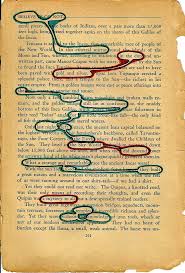The National Institute for Health and Care Excellence (NICE) has just updated its guideline on managing violence and aggression in inpatient psychiatric settings (NICE 2005). The new guideline is called: “Violence and aggression: short-term management in mental health, health and community settings” (NICE 2015).
Naturally – as I lead therapeutic writing groups in acute psychiatric units – I am always interested to find out what NICE guidelines may say about the provision of creative groups/activities in psychiatric wards, and particularly whether writing groups get a mention. So I was pleased to see that the new guideline does indeed mention the provision of writing groups for inpatients in one of the domains of “a framework to anticipate violence and aggression in inpatient psychiatric wards” (NICE 2015, p9). Specifically, the domain states: “Ensure that service users are offered appropriate psychological therapies, physical activities, leisure pursuits such as film clubs and reading or writing groups, and support for communication difficulties.”
Although disappointed to see writing referred to merely as an example of a “leisure pursuit” (rather than as a complimentary therapy), I nevertheless see this specific mention of writing groups as an incremental step forward for therapeutic writing in the UK.
The wording in the new guideline is definitely an improvement on the old, which stated: “Services should be able to accommodate service users’ needs for engaging in activities and individual choice – there should be an activity room and a dayroom with a television, as boredom can lead to disturbed/violent behaviour” (NICE 2005, p14).
Unfortunately, most NICE guidelines do not mention provision of creative activities in their recommendations. The small number of current NICE recommendations that do refer to creative therapies and activities include:
“Ensure that service users in hospital have access to a wide range of meaningful and culturally appropriate occupations and activities 7 days per week, and not restricted to 9am to 5pm. These should include creative and leisure activities” (NICE 2011, p22).
“Consider offering arts therapies to all people with psychosis or schizophrenia, particularly for the alleviation of negative symptoms. This can be started either during the acute phase or later, including in inpatient settings” (NICE 2014, p25).
Getting therapeutic writing embedded into the recommendations of UK clinical guidelines is probably not going to happen anytime soon, but with the publication of the new NICE NG10 guideline we have taken a small step forwards.
References
NICE (2005). The short-term management of disturbed/violent behaviour in in-patient psychiatric settings and emergency departments. London: National Institute for Health and Care Excellence, CG25, February 2005. Retrieved 30/05/2015 from: https://www.nice.org.uk/guidance/cg25/resources/guidance-violence-pdf
NICE (2011). Service user experience in adult mental health: improving the experience of care for people using adult NHS mental health services. London: National Institute for Health and Care Excellence, CG136, December 2011. Retrieved 30/05/2015 from: http://www.nice.org.uk/guidance/cg136/resources/guidance-service-user-experience-in-adult-mental-health-improving-the-experience-of-care-for-people-using-adult-nhs-mental-health-services-pdf
NICE (2014). Psychosis and schizophrenia in adults: treatment and management. London: National Institute for Health and Care Excellence, CG178, March 2014. Retrieved 30/05/2015 from: https://www.nice.org.uk/guidance/cg178/resources/guidance-psychosis-and-schizophrenia-in-adults-treatment-and-management-pdf
NICE (2015). Violence and aggression: short-term management in mental health, health and community settings. London: National Institute for Health and Care Excellence, NG10, May 2015. Retrieved 30/05/2015 from: http://www.nice.org.uk/guidance/ng10









